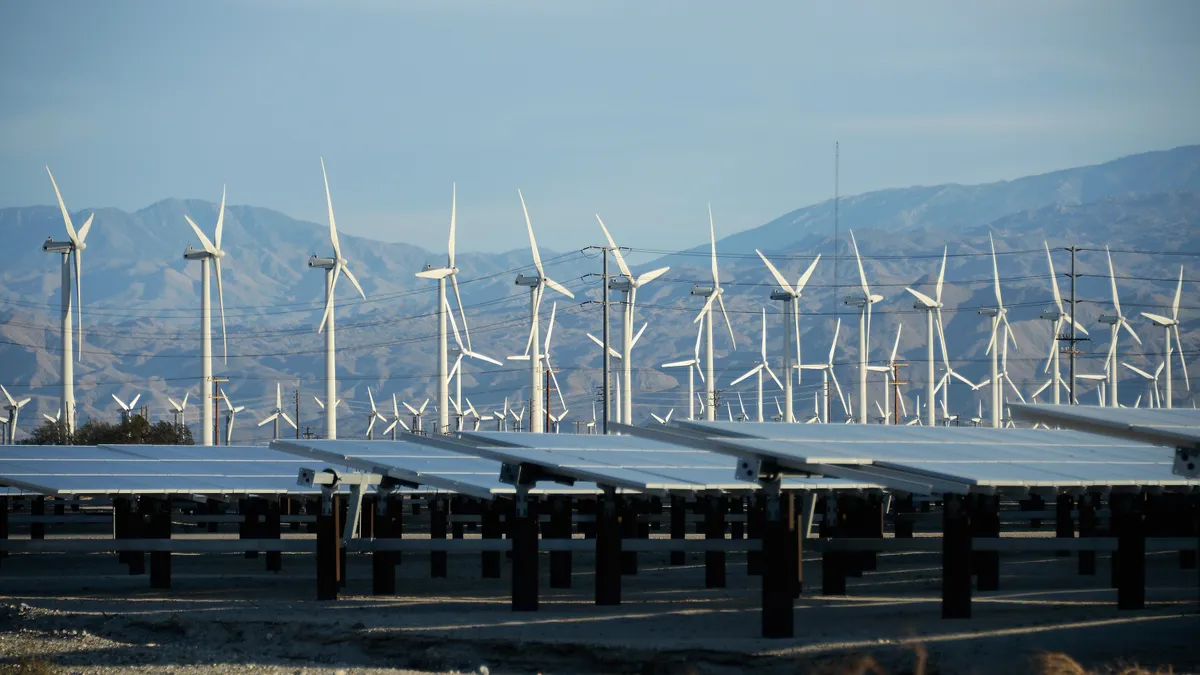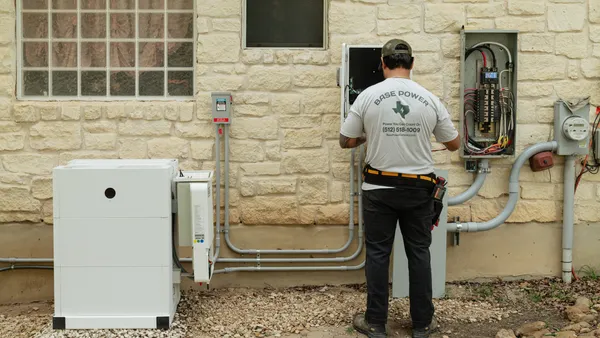Dive Brief:
- California's economy is the second fastest growing in the world, behind only China, and much of that growth is being fueled by investment in climate solutions and the clean energy transition, California Energy Commission (CEC) Chair David Hochschild said Monday at an event hosted by The Washington Post.
- "We just hit this month a very significant milestone, reaching 1 million electric vehicles sold in California," Hochschild said. There are almost three dozen companies making EVs in the state, which are now its largest export, he said.
- The CEC's efforts on appliance efficiency and building electrification requirements are also helping California to use less energy and electrify all energy end uses. "I really subscribe to the philosophy of ... relentless, incremental improvements," Hochschild said.
Dive Insight:
Hochschild, along with Bristol, England, Mayor Marvin Rees, spoke with Washington Post Deputy Climate and Environment Editor Juliet Eilperin about various models being used to promote efficiency and clean energy adoption. In the wake of the 2021 United Nations Climate Change Conference (COP26), each leader stressed that the most significant advances on decarbonization are being driven at the local level.
"Local and state leadership is really how change happens in our world," Hochschild said. "It's really from the bottom up. And what we need at the local and state level is support from the national government."
Rees said the agreements among national governments had been "watered down," but what was really missing from COP26 "was not in the commitments, but was in the the ability to recognize the leadership role of cities in delivering decarbonization."
Agreements among governments needs to happen, Rees said, "but this zero sum game between nation states holds the conversation back because they can't work with global interdependence."
In California, the state has advantages in the size of its economy and the way its energy rules are set, said Hochschild. The CEC has the authority to set energy efficiency codes and standards, and manufacturers tend to offer those same products nationwide.
The CEC also sets the energy code for new building construction every three years, and in August adopted energy efficiency standards to incentivize all-electric construction. The state has also mandated solar panels on all new non-residential buildings, which Hochschild said adds about 500 MW of new capacity each year.
"In addition to that, we are requiring greater electrification. So we're making every home electric ready, which means you have to have electric panels sufficient to support an EV charger, electric induction cooktop, heating, ventilation, water heating, etc.," he said.
The CEC estimates that today in California less than 5% of homes are all electric. New requirements "will get us to close to half of new homes being all electric," Hochschild said. And he credited the work of dozens of cities that "have gone out ahead of the state and are doing their own electrification preferences, or mandates on new construction."
According to the Sierra Club, as of July, more than 50 California cities had committed to phasing out gas in new buildings.
CEC's ability to require improvements in energy efficiency in a wide range of products and sectors means "relentless, incremental improvements" can add up to major savings, said Hochschild. The agency adopted energy efficiency standards for televisions in 2009, for instance, which cut their electricity consumption by half and saves consumers $1 billion annually on electricity costs, he said. And the CEC is "just getting going now" on new standards to require greater efficiency from lower-resistance tires, which Hochschild said can add 1% to 2% to the range of an electric vehicle.
California has 40 million residents and "manufacturers don't want to manufacture just for one market like California. In many cases, they end up upgrading their whole manufacturing lines for the North American market," he said.
Climate solutions have been "really good for California's economy," Hochschild said, pointing out that 53% of U.S. clean tech venture capital comes into California. And he expects the state's focus on clean energy and efficiency to continue, as California now uses about 63% carbon-free electricity but must reach 100% by 2045.
"Even when you do a very strict energy efficiency code, because of the advances in technology, you can do another one, and still squeeze out more savings," he said.















